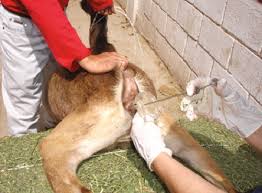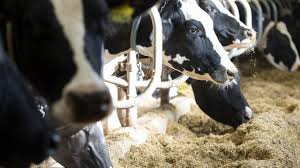After selection, mating or breeding follows. This article discusses the various systems of breeding employed by animal breeders. Breeding is the selective control of mating in plants and animals to produce organisms that better serve human needs for food, work, sport, or aesthetics.
Simple breeding methods have been employed throughout human history. From paintings on the walls of Egyptian tombs, archaeologists have determined that dogs were bred at least 4,000 years ago, and perhaps as early as 10,000 years ago. Ancient civilizations also domesticated varieties of cattle, sheep, goats, and grains.
Overview of Breeding Systems in Agriculture
After selection, mating or breeding follows. There are three main breeding systems: Inbreeding, Outbreeding, and Crossbreeding.
Read Also: Guide to Milk Production, Composition, and Nutritional Value of Milk
1. Inbreeding in Animal Breeding

Inbreeding is a mating system in which the male and female are more closely related than the average of the population from which they come, e.g., mating brother and sister. Inbreeding increases the homozygosity of gene pairs in the population.
The more closely related the individuals, the greater the degree of inbreeding. Mating individuals with unrelated ancestry results in zero inbreeding.
The degree of inbreeding, or the probability that genes received by an offspring are from the same ancestor when two related parents are mated, is known as the inbreeding coefficient. For example, an inbreeding coefficient of 10% means that the probability of the gene in the resulting offspring being from the same ancestor is 10%.
Inbreeding can lead to a phenomenon known as inbreeding depression, where individuals produced are less vigorous than the original parents. For example, a 10% increase in inbreeding has been shown to depress egg production by about 6.2%, milk production by about 3.2%, litter size of pigs by about 4.6%, and body weight (a non-reproductive trait) in poultry by 0.8%.
Inbreeding also uncovers deleterious traits, such as dwarfism in cattle. Deleterious traits are often recessive. It is important to note that inbreeding increases homozygosity with respect to both dominant and recessive traits.
2. Uses of Inbreeding in Animal Breeding
Inbreeding is commonly used in the development of pure lines, especially where these lines are associated with dominant desirable traits. It can also help uncover undesirable genes for elimination.
For instance, suspected carriers of undesirable traits can be crossed with known heterozygotes or their own offspring. This will bring out all the recessive genes the sire may be carrying, helping the farmer identify the genetic worth of the animals and identify undesirable recessive genes for culling. Highly inbred lines are also useful in laboratory animals for experiments and tests.
3. Line Breeding in Animal Breeding
Line breeding is essentially a form of inbreeding, but it involves mating individuals that are not more closely related than half-brothers and half-sisters. The goal of line breeding is to maintain a high relationship to an outstanding ancestor rather than increase homozygosity. Any homozygosity occurring in such cases is incidental.
When the herd average is high, and the introduction of a new sire may lower the merit of the herd, line breeding is very desirable. At least two sires are needed in the herd to prevent inbreeding from rising to levels that could lead to the expression of recessive genes, which could result in defective individuals.
4. Outbreeding in Animal Breeding
Outbreeding involves the mating of members of the same breed who are less related than the average of the population. It increases heterozygosity and is useful in maintaining certain outstanding characteristics of the breed.
5. Upgrading in Animal Breeding
Upgrading is a form of outcrossing. In upgrading, a purebred male is mated repeatedly with females of lower quality, and the resulting female offspring from the low breed are used. This method is aimed at improving the character of the low-quality breed and is useful for developing new breeds adapted to specific environmental conditions.
Crossbreeding in Animal Breeding
Crossbreeding involves mating individuals from different breeds to obtain a hybrid. Since desirable genes often show dominance, the first progeny of such crosses typically combine the best qualities of both breeds, making the offspring more vigorous than either of the parent breeds. This phenomenon is known as hybrid vigor or heterosis.
Read Also: Understanding Milk Quality and Quality Characteristics of Milk
Artificial Insemination in Animal Breeding

Artificial insemination (AI) is a technique where semen with living sperm is collected from a male and introduced into the female reproductive tract at the proper time using instruments.
Artificial insemination involves the following steps: collection of semen from the male, examination of semen quality, semen dilution, and insemination or deposition of semen into the female reproductive tract.
1. Benefits of Artificial Insemination
Artificial insemination allows the maximum exploitation of the best sires. If properly organized, it reduces breeding costs, as there is a reduction in the number of sires to be maintained.
Additionally, it helps improve the overall standard of management as farmers must closely monitor their female stock. AI also minimizes the spread of venereal and other diseases.
It is especially useful in importing exotic livestock for crossbreeding or upgrading purposes, where it is uncertain whether exotic sires will thrive in the local environment.
Challenges of Artificial Insemination in Tropical Regions
Despite its benefits, several factors hinder the use of artificial insemination in tropical regions. One major issue is the low level of farm recording in many countries, which limits the testing of artificial insemination bulls. Additionally, many livestock owners rear animals primarily for meat, so the use of AI does not reduce bull maintenance costs.
Another challenge is the difficulty in detecting heat periods in tropical breeds, such as Zebus, which often occur at night and are short. This makes it easy to miss heat periods, reducing the efficiency of AI operations.
Similarly, short and silent heats are common in exotic dairy breeds managed in the tropics, leading to uneconomical AI operations in many exotic dairy herds.
Modern animal breeding practices today rely largely on mass selection, complemented by three other methods: pedigree selection, family selection, and progeny selection.
Pedigree selection focuses on the quality of ancestors, useful for evaluating young animals with undeveloped phenotypes and selecting for traits with high heritability. However, pedigree selection is slow. Family selection, based on analyzing the qualities of relatives, is faster and is often used alongside individual selection.
It is valuable in selecting for sex-limited traits like egg-laying ability or milk production. Progeny selection involves choosing individuals based on the records of their offspring, which is helpful when selecting for traits with low heritability. However, progeny selection is slow because it requires waiting for one or more generations to evaluate offspring quality.
To achieve meaningful animal improvement, breeders must adopt appropriate breeding systems, combining methods like pedigree, family, and progeny selection to improve livestock and meet specific agricultural goals.
Do you have any questions, suggestions, or contributions? If so, please feel free to use the comment box below to share your thoughts. We also encourage you to kindly share this information with others who might benefit from it. Since we can’t reach everyone at once, we truly appreciate your help in spreading the word. Thank you so much for your support and for sharing!

